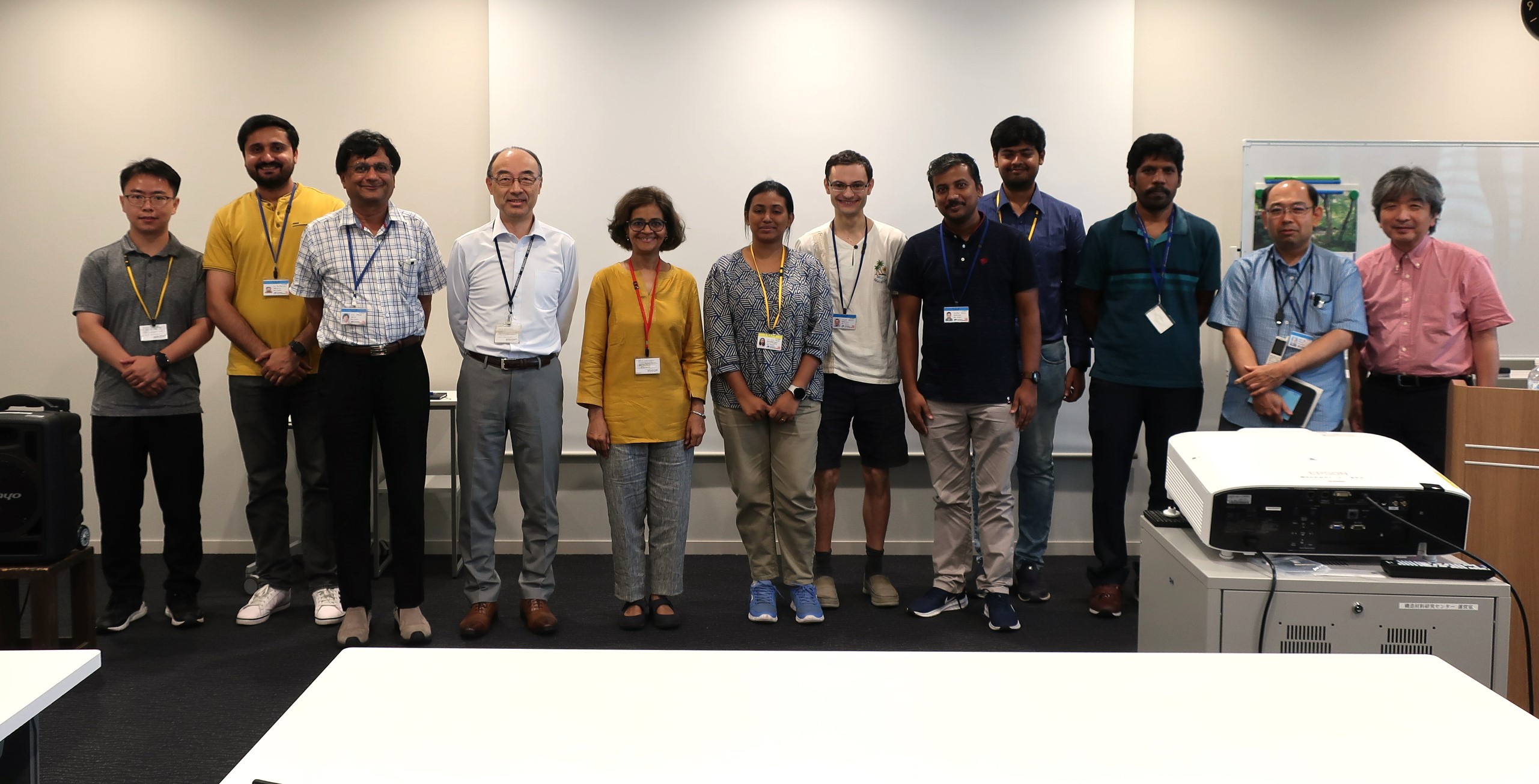2024年7月9日、NIMSにて、Prof. Prita Pantによるご講演が第156回構材ゼミとして開催されました。
Prof. Prita Pant
(Department of Metallurgical Engineering and Materials Science, Indian Institute of Technology, Bombay (IIT Bombay) Mumbai, India)
日 時:2024年7月9日(火曜日)15:00~16:00
会 場:先進構造材料研究棟 5階カンファレンスルーム
演 題:Investigations into microstructure and deformation of TRIP steel
開催者:大村孝仁(強度物性グループ)

講演後の集合写真
Prof. Prita Pant(左から5人目)
Abstract
Medium Mn steels, comprising 3 to 12 wt.% Mn, hold great promise for automotive applications. These steels exhibit a unique combination of multiphase structure, along with composition variation, which plays an important role in their deformation response. We have carried out extensive studies into the microstructure and deformation behaviour of Fe-4.98Mn 0.2C-0.89Si -0.34Al medium Mn steel.
Two different morphologies were developed by hot rolling and quenching (HRQ), and tempering and cold rolling (TCR) respectively, followed by inter-critical annealing between AC1 and AC3 temperature. Tensile tests revealed significant differences in the strain hardening rates and ductility of the two samples. To further understand the role of individual phases in the deformation response, extensive nanoindentation studies were carried out. The load-displacement (P-h) curves were analyzed to identify the initiation of plasticity. By comparing with the Hertzian elastic contact solution it was concluded that plasticity initiated in austenite, followed by ferrite. Displacement bursts, also known as “pop-ins” were seen in both austenite and ferrite. The first pop-in occurred at a lower load in ferrite, while multiple small pop-ins were observed in austenite.
Since the fraction and stability of individual phases is critical in controlling the plastic deformation of medium Mn steels, in-situ studies of the inter-critical annealing process were carried out in a synchrotron. Diffraction data was collected during heating and holding at 660 C. Our analysis revealed novel and interesting aspects of ferrite to austenite reversion during holding, where the rate of transformation for the HRQ sample was considerably higher than TCR sample, though the final volume fractions were nearly the same in both the cases. Lattice parameters for austenite and ferrite phases were calculated, and correlated with partitioning of C and Mn in the two phases. Finally, STEM-EDS studies were carried out for a few annealing durations to better understand the role of elemental partitioning in the reversion of austenite, and its stability after quenching. These insights are critical for designing optimal heat-treatment schedules for dual phase TRIP/TWIP steels to reduce processing time, while obtaining the desired microstructure for high strength and ductility combinations.
Speaker Bio
Prof. Prita Pant received her MS and PhD degrees from the Materials Science and Engineering department at Cornell University (USA), and is currently a Professor in the Department of Metallurgical Engineering and Materials Science at IIT Bombay.
Her research interests are in the general area of microstructure changes that occur during deformation, and their effect on the mechanical behaviour of materials. Her group carried out experiments on bulk and micro-scale deformation, along with optical and electron microscopy to investigate the evolution in microstructure; they then couple these with simulations to get better insight into behaviour of defects. They have been working on TRIP Steel, Ni based superalloys, Cu-Al alloys and recently on additively manufactured 316 L steel. Simulation techniques that they commonly use, are dislocation dynamics (DD), Molecular Dynamics (MD) and Monte Carlo (MC). They also carry out phase field DD simulations in collaboration.